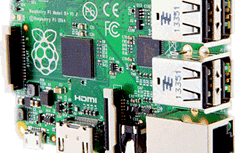ONE LOGIN FOREVER

One login forever
With the era of the internet taking over, many of us have to deal with a multiple number of accounts on different websites that we use on a daily basis.
In order to simplify our lives, a number of thoughts have been taken into account when designing websites and other services. Despite all of this work, our life on the internet is still very slow, mainly due to the fact that for various purposes, many websites require us to log in order to use their services.
Designing a service which will allow users to use one login forever would be an amazing idea which could benefit internet users all around the world. Some may have refused to think about it due to security problems, or other factors which they took into account. Regardless of this, the idea is quite simple and is capable of improving the experience people have while browsing the web. As technology continues to evolve, a certain security idea which will make sure that our login is safe will eventually emerge. Some have thought of fingerprint scanners on all mobile devices and computers where users would have to scan their finger in order to gain instant access to a service, without the hassle of needing to introduce a username and remembering a password. As many of us know, fingerprints are unique and creating a replica is currently impossible, therefore it represents a potential idea which website developers and other tech companies around the world can consider when building their future services.
Apart from the idea of introducing a simple to use fingerprint scanner, companies could also unite to provide a system which will ease the life of many users all around the world.
In conclusion, having one login which could be used on all websites around the world will not only make browsing the web a lot faster, but it will also improve the quality of it together with the way a customer feels while doing so. If the idea is supported accordingly, it has true potential to become a worldwide phenomenon and to encourage companies to try and make the internet even better and easier to navigate on.
Copyright Nettfunder 2014
————-
Biometric verification is any means by which a person can be uniquely identified by evaluating one or more distinguishing biological traits. Unique identifiers include fingerprints, hand geometry, earlobe geometry, retina and iris patterns, voice waves, DNA, and signatures. The oldest form of biometric verification is fingerprinting. Historians have found examples of thumbprints being used as a means of unique identification on clay seals in ancient China. Biometric verification has advanced considerably with the advent of computerized databases and the digitization of analog data, allowing for almost instantaneous personal identification.
Iris-pattern and retina-pattern authentication methods are already employed in some bank automatic teller machines. Voice waveform recognition, a method of verification that has been used for many years with tape recordings in telephone wiretaps, is now being used for access to proprietary databanks in research facilities. Facial-recognition technology has been used by law enforcement to pick out individuals in large crowds with considerable reliability. Hand geometry is being used in industry to provide physical access to buildings. Earlobe geometry has been used to disprove the identity of individuals who claim to be someone they are not (identity theft). Signature comparison is not as reliable, all by itself, as the other biometric verification methods but offers an extra layer of verification when used in conjunction with one or more other methods.
No matter what biometric methodology is used, the identification verification process remains the same. A record of a person’s unique characteristic is captured and kept in adatabase. Later on, when identification verification is required, a new record is captured and compared with the previous record in the database. If the data in the new record matches that in the database record, the person’s identity is confirmed.
RELATED GLOSSARY TERMS: RSA algorithm (Rivest-Shamir-Adleman), data key, greynet (or graynet), spam cocktail (or anti-spam cocktail), fingerscanning (fingerprint scanning),munging, insider threat, authentication server, defense in depth, nonrepudiation
Biometric verification is any means by which a person can be uniquely identified by evaluating one or more distinguishing biological traits. Unique identifiers include fingerprints, hand geometry, earlobe geometry, retina and iris patterns, voice waves, DNA, and signatures. The oldest form of biometric verification is fingerprinting. Historians have found examples of thumbprints being used as a means of unique identification on clay seals in ancient China. Biometric verification has advanced considerably with the advent of computerized databases and the digitization of analog data, allowing for almost instantaneous personal identification.
Iris-pattern and retina-pattern authentication methods are already employed in some bank automatic teller machines. Voice waveform recognition, a method of verification that has been used for many years with tape recordings in telephone wiretaps, is now being used for access to proprietary databanks in research facilities. Facial-recognition technology has been used by law enforcement to pick out individuals in large crowds with considerable reliability. Hand geometry is being used in industry to provide physical access to buildings. Earlobe geometry has been used to disprove the identity of individuals who claim to be someone they are not (identity theft). Signature comparison is not as reliable, all by itself, as the other biometric verification methods but offers an extra layer of verification when used in conjunction with one or more other methods.
No matter what biometric methodology is used, the identification verification process remains the same. A record of a person’s unique characteristic is captured and kept in adatabase. Later on, when identification verification is required, a new record is captured and compared with the previous record in the database. If the data in the new record matches that in the database record, the person’s identity is confirmed.
RELATED GLOSSARY TERMS: RSA algorithm (Rivest-Shamir-Adleman), data key, greynet (or graynet), spam cocktail (or anti-spam cocktail), fingerscanning (fingerprint scanning),munging, insider threat, authentication server, defense in depth, nonrepudiation
Leave a Reply
You must be logged in to post a comment.





Share This